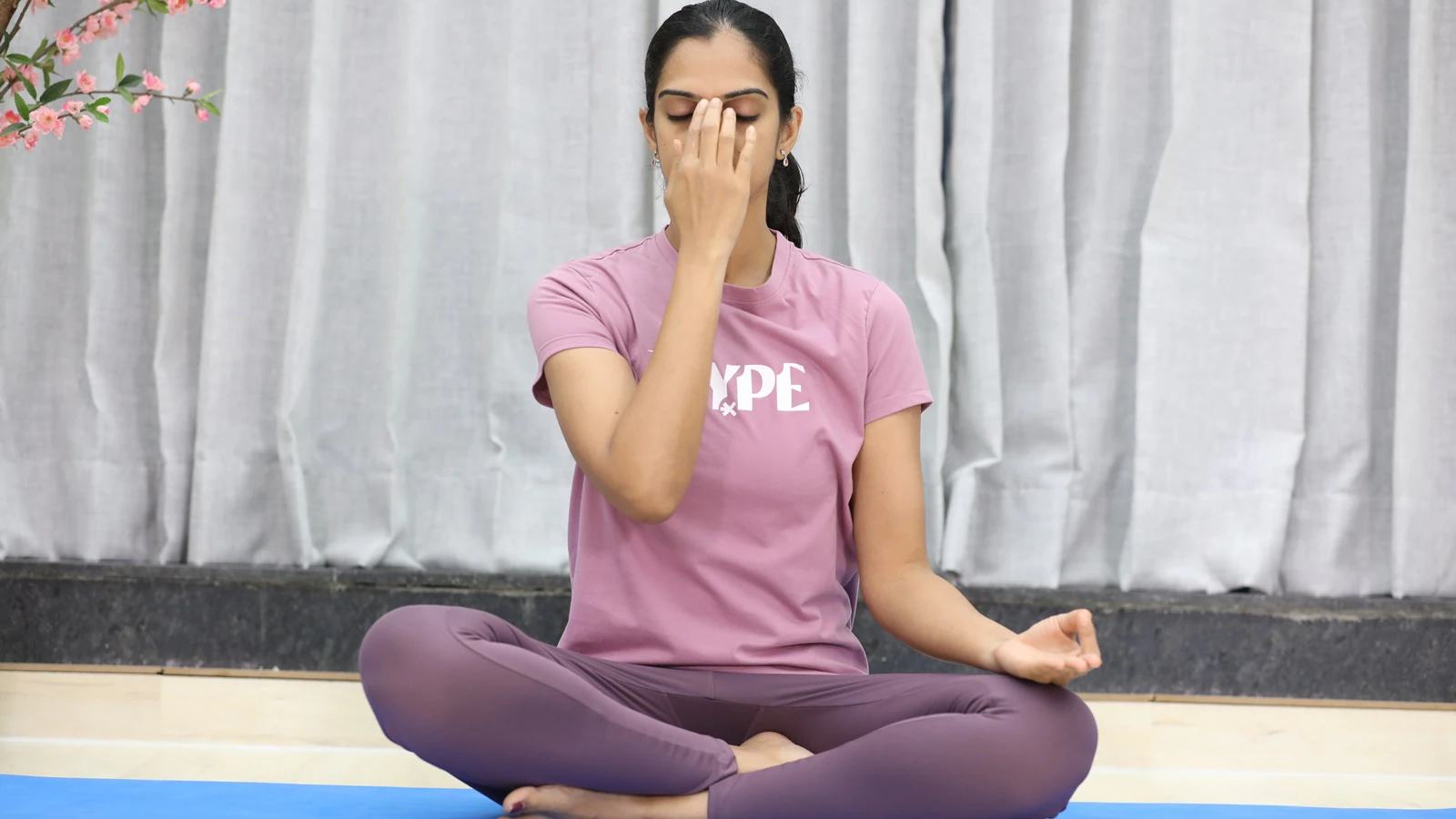Diwali, the festival of lights, brings joy, celebration, and togetherness—but it also brings a surge in air pollution levels. Crackers, smoke, and increased vehicle emissions often fill the air with harmful pollutants that can irritate the lungs and lead to respiratory discomfort. From coughing and congestion to aggravated asthma and allergies, polluted air can take a toll on your health, especially your lungs.
While you can’t control the air outside, you can strengthen your lungs and improve your respiratory health through yoga. Certain yoga poses (asanas) and breathing exercises (pranayama) enhance lung capacity, improve oxygen circulation, and help the body detoxify naturally. Practicing these regularly—especially during and after Diwali—can help you breathe easier and stay energetic despite the smog.
Here are five powerful yoga poses that can protect and purify your lungs this Diwali.
1. Bhujangasana (Cobra Pose)
How It Helps:
Bhujangasana opens up the chest, stretches the lungs, and improves the flow of oxygen throughout the body. It strengthens the respiratory muscles, making breathing deeper and more efficient. This pose is particularly beneficial for clearing mucus buildup in the lungs caused by pollution.
How to Do It:
- Lie flat on your stomach with your legs stretched out and toes pointing backward.
- Place your palms beside your chest, elbows close to your body.
- Inhale deeply and slowly lift your head, chest, and upper abdomen off the floor, keeping your navel grounded.
- Arch your back gently and look upward, feeling the stretch in your chest and lungs.
- Hold the position for 15–20 seconds while breathing deeply.
- Exhale and slowly return to the starting position.
Repeat 3–5 times.
Tip: Avoid straining your lower back—lift only as much as feels comfortable.
2. Anulom Vilom (Alternate Nostril Breathing)
How It Helps:
Anulom Vilom is one of the best breathing exercises to cleanse the respiratory system. It balances the oxygen and carbon dioxide exchange, strengthens the lungs, and helps clear pollutants and toxins from the nasal passages. This pranayama also calms the nervous system and reduces stress—a common problem during festive hustle.
How to Do It:
- Sit comfortably in a cross-legged position (Sukhasana). Keep your spine straight and shoulders relaxed.
- Close your right nostril with your thumb and inhale deeply through the left nostril.
- Close the left nostril with your ring finger, open the right nostril, and exhale slowly.
- Inhale through the right nostril, close it, and exhale through the left.
This completes one round.
Practice for 5–10 minutes daily.
Tip: Practice in a well-ventilated room or near indoor plants for fresh air.
3. Dhanurasana (Bow Pose)
How It Helps:
Dhanurasana strengthens the lungs, chest, and diaphragm while improving flexibility in the back and shoulders. This pose increases lung capacity, promotes better oxygenation, and helps expel stale air trapped in the lungs—an excellent way to counter pollution-related breathing issues.
How to Do It:
- Lie flat on your stomach with your arms beside your body.
- Bend your knees and bring your heels close to your hips.
- Reach back and hold your ankles with your hands.
- Inhale deeply and lift your chest, arms, and thighs off the floor simultaneously.
- Pull your legs slightly upward, creating a gentle bow shape.
- Hold for 15–20 seconds while breathing steadily, then exhale and relax.
Repeat 2–3 times.
Tip: Avoid this pose if you have a back injury or high blood pressure.
4. Matsyasana (Fish Pose)
How It Helps:
Matsyasana expands the chest and lungs, improving breathing capacity and relieving congestion. It also stimulates the thymus gland, which helps boost immunity—a vital defense against pollution-related infections. Regular practice can reduce the heaviness or tightness that often comes with polluted air.
How to Do It:
- Lie flat on your back with your legs extended and arms resting beside your body.
- Slide your hands under your hips, palms facing down.
- Inhale and lift your chest upward, arching your back and gently tilting your head backward so the crown of your head touches the floor.
- Keep your weight on your elbows, not your head.
- Hold the position for 20–30 seconds while taking deep breaths.
- Exhale and slowly lower your chest and head back down.
Repeat 2–3 rounds.
Tip: Beginners can use a cushion or rolled towel under their upper back for support.
5. Kapalabhati Pranayama (Skull Shining Breath)
How It Helps:
Kapalabhati is a powerful breathing exercise that cleanses the lungs, airways, and sinuses. The rapid, forceful exhalations help expel carbon dioxide, dust, and pollutants from the respiratory system. It also boosts blood circulation and energizes the mind, making it a must-do during pollution-heavy days.
How to Do It:
- Sit comfortably with your spine straight.
- Take a deep inhale through both nostrils.
- Exhale sharply through the nose, pulling your navel inward toward your spine.
- Allow the inhalation to happen naturally and focus on the exhalations.
- Perform about 20–30 quick exhalations in one round, then rest.
Practice 2–3 rounds.
Tip: Avoid if you have high blood pressure, pregnancy, or heart conditions.
Additional Tips to Protect Your Lungs During Diwali
- Practice indoors with an air purifier or open windows early morning when pollution levels are lower.
- Hydrate well — water flushes toxins from your body.
- Include antioxidants in your diet—fruits like oranges, berries, and pomegranates help protect lung cells from damage.
- Steam inhalation with tulsi or eucalyptus oil can soothe irritation caused by smoke exposure.
- Avoid morning walks during peak pollution days; instead, practice yoga indoors.
Conclusion
This Diwali, celebrate responsibly by keeping your body, mind, and lungs healthy. While you can’t completely avoid the pollutants in the air, you can certainly strengthen your lungs and boost your respiratory endurance through yoga. Practicing asanas like Bhujangasana, Dhanurasana, and Matsyasana along with pranayama techniques such as Anulom Vilom and Kapalabhati can significantly improve lung health, purify your breathing system, and keep you calm and energized.
Make yoga your post-Diwali detox ritual—because true celebration begins when you can breathe freely, feel light, and radiate inner peace.
Do Follow Us On Instagram







